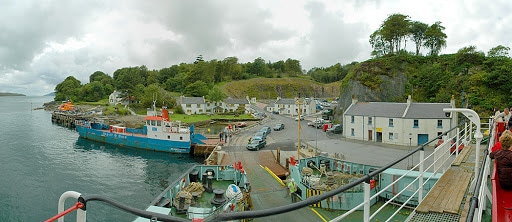
ISLAY SCOTCH WHISKY PART 2 – TOURING THE UNPEATED DISTILLERIES
For a relatively small island, Islay has an abnormally high percentage of top flight distilleries considering the minimal population. With it’s 10 working distilleries on Islay and only 3,000 or so residents, odds are you are employed by one of them if you reside on this beautiful piece of land. Known the world over, with a reputation of high quality, heavily peated scotches, there are also a few distilleries that produce a non peated spirit of exceptional quality. In part 2 of this 3 part series, we will take a closer look at these distilleries and try to give you a sense of what distinguishes these offerings from those of their more peated neighbors. Two of the 3 make their home on the northeast coast, while Bruichladdich, is located more towards the central part of Islay.
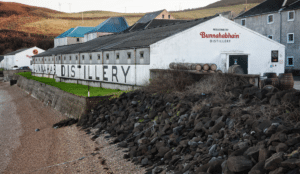
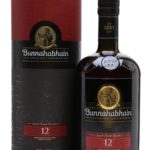
BUNNAHABHAIN – Bunnahabhain, pronounced “Boon a habbain”, like many of the distilleries on Islay (and many in Scotland for that matter) has a long and storied history. It was founded in 1881 near Port Askaig, with the small village of Bunnahabhain built to house its workers. Since 2014 the distillery has been owned by Distell and is one of ten active distilleries on the island. Bunnahabhain’s availability in the US consists of the 12, 18 or 25 year old or perhaps the occasional non age statement offering (usually Toiteach A Dha or Stiuireadir) Though a quick glance at their website will show a number of limited editions in production (http://bunnahabhain.com/our-whisky/) The
Bunnahabhain 12 year old carefully balances sweet fruit, nuts, vanilla and just lightly touches on it’s coastal essence. Think of a Cadbury fruit and nut bar. The Stiuireadir has a more pronounce sea spary feel, but as this is a sherried malt, you will also be treated to the lingering dried fruit on the finish. These are some of the most mild single malts available and as I mentioned, their taste varies greatly from other spirits to be found on the island of Islay. Definitely seek out the 2 mentioned above and compare them to some of the other Islay malts. The name Bunnahabhain is Scottish Gaelic for Mouth of the River
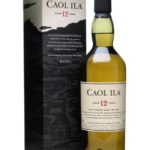
CAOL ILA – Caol Ila is pronounced “Cull eela” and is Gaelic for Sound of Islay or Islay Strait. This is in reference to the distillery’s location, which overlooks the strait between Islay and Jura. It was founded in 1846 by Hector Henderson, but the road would be very rocky for this unique distillery. By 1854, Norman Buchanan, owner of the Isle of Jura Distillery, would take it over. Only 9 years later the business was acquired by Bulloch Lade & Co, of Glasgow. They installed Duncan Johnston as Distillery Manager. Duncan was the nephew of John Johnston of Lagavulin and cousin to the Laphroaig Johnstons and so the family were involved with yet another distillery on the island. By the 1880s over 147,000 gallons of whisky were being produced there each year.
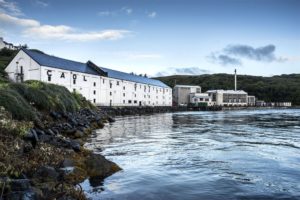
In 1920 Bulloch Lade went into voluntary liquidation, and a consortium of businessmen formed the Caol Ila Distillery Company Ltd and took control of Caol Ila. In 1927 the Distillers Company acquired a controlling interest in Caol Ila, and in 1930, Scottish Malt Distillers Ltd obtained ownership of all the shares. The distillery closed during World War II from 1942 to 1945, because of wartime restrictions on the supply of barley to distillers. After the war, production continued until 1972, when the entire physical structure of the distillery was demolished. A larger distillery was then built, designed by George Leslie Darge in the same architectural style as many of his others with his trademark glazed curtain walls to the still houses, and production resumed in 1974. The company eventually became part of Diageo.
Caol Ila is one of the lighter Islay whiskies, pale in colour, with peaty, floral and peppery notes. In addition to being sold as a single malt, it is used heavily (around 95% of their production) in blends such as Johnnie Walker’s Black Label. As a single malt, the 12, 15 and 18 year olds are the most readily available. Though highly regarded, I find they aren’t as accessible as some of the other “peatless” offerings on the island. The 12 year old smells of citrus with hints of a medicinal aroma. On the pallet there’s some acidity, saltiness and even a little tartness. The 15 year old shares notes of citrus and vanilla and floats down the throat with a viscous cooling of pine resin and licorice. The 18 year old does evoke an “islay” feel, as it smells of smoke and carries it through until the end. All of these are phenomenal whiskies, though they just may be a bit sophisticated for someone’s first step into unpeated Islay spirits.
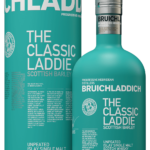
BRUICHLADDICH – Pronounced “Brookh laad ee”, Bruichladdich means Brae of the shore. Bruichladdich was built in 1881 by the Harvey brothers on the shore of Loch Indaal, towards the western most part of the island. The Harveys were a big deal in the whisky world and had owned two Glasgow distilleries for at least a decade before this venture. Using their inheritance, the three brothers combined their talents to build a third distillery, Bruichladdich, which was designed by John, engineered by Robert, and financed by William and other family members. At the time, the distillery was a state-of-the-art design and quite unlike Islay’s older distilleries. These previous distilleries, for the most part, had just been converted old farm buildings. Bruichladdich was built from stone from the sea shore and has a very efficient layout, built around a large, spacious courtyard.
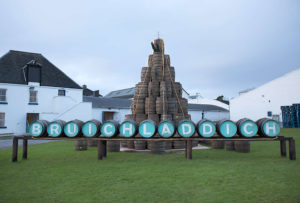
In keeping with the habit of going against the norm, they chose uniquely tall and narrow-necked stills to produce a very pure and original spirit. Once again, the opposite in terms of style, from those produced by the older farm distilleries. Due to a quarrel with his brothers prior to completion of the distillery, William Harvey took over full operation until a fire halted production in 1934 and his death in 1936. Over the next forty years, it changed owners several times as a result of corporate take-overs and changes within the industry, until 1994, when it was shut down for being what was described as ‘surplus to requirements’.
The distillery was subsequently purchased by a group of private investors led by Mark Reynier of Murray McDavid in December 2000. Jim McEwan, who had worked at Bowmore Distillery since the age of 15, was hired as master distiller and production director. Between January and May 2001 the whole distillery was dismantled and reassembled, with the original Victorian décor and equipment retained. Though many regard this as a romantic gesture, it was really due to a lack of funding. However, it worked in favor of the distillery and most of the original Harvey machinery is still in use today. No computers are used in production with all processes controlled by skilled artisans who pass on information orally and largely measure progress using dipsticks and simple flotation devices.
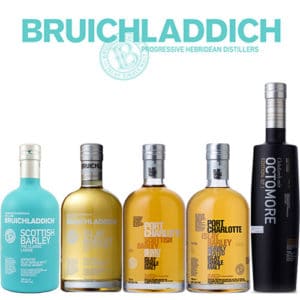
Unique to the other distilleries in this feature, Bruichladdich produces considerable amounts of both unpeated and peated spirits. Most notably The Classic Laddie, Islay Barley, The Organic and Bere Barley on the unpeated side and Port Charlotte and the mammothly smoky Octomore on the peated side. Look for a full feature on Octomore soon, covering the history and cult following of this amazing spirit. The Classic Laddie comes in the trademark blue bottle and delivers notes of sugar, followed quickly by a light floral tone. There’s a freshness on the pallet combined with a brown sugar sweetness. A very approachable whisky. The Islay Barley caresses the nose with floral notes, vanilla and honey and runs over the pallet with caramel and brown sugar once again. Perhaps the breeze of the sea blows across as well…or maybe that’s just my imagination. The Organic (made completely organically) hits the nose initially with raw malt and the followed by a basket of stone fruits and melons. Bere Barley rounds things out with reminders of breakfast. Aromas of oatmeal with brown sugar and syrup are at the forfront. The taste is somewhat similar, delivering a truth in advertising statement on the pallet.
So those are (for the most part) the distilleries on Islay that hang their proverbial product hat on the unpeated peg. Next week we will wrap up this series with Part 3 – The Last but Certainly not Least. You’ll find that there’s some wrinkles in this list and we may even uncover an Islay mystery in the process (or just create more confusion…who knows) See you soon…
